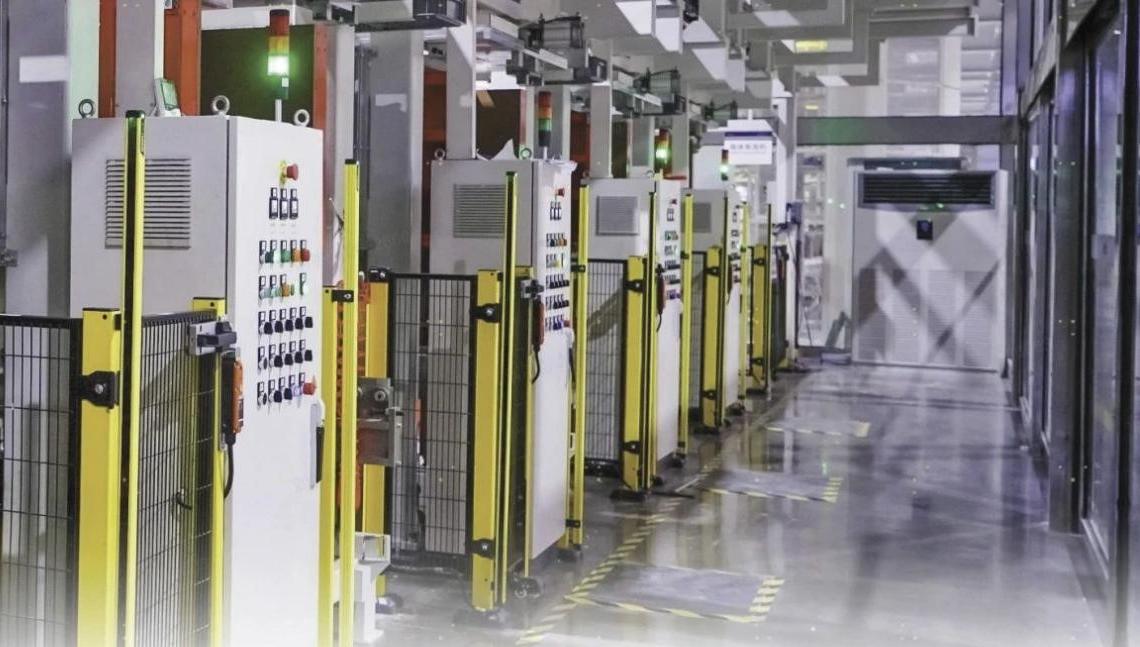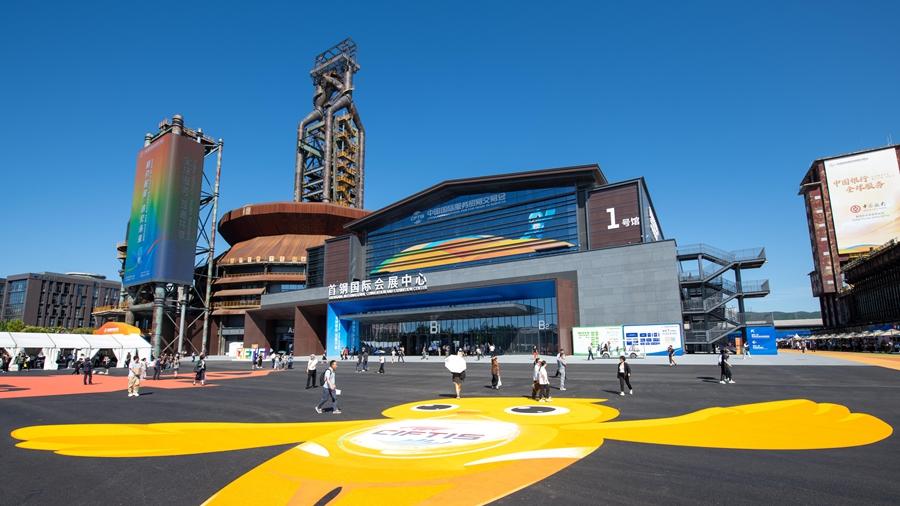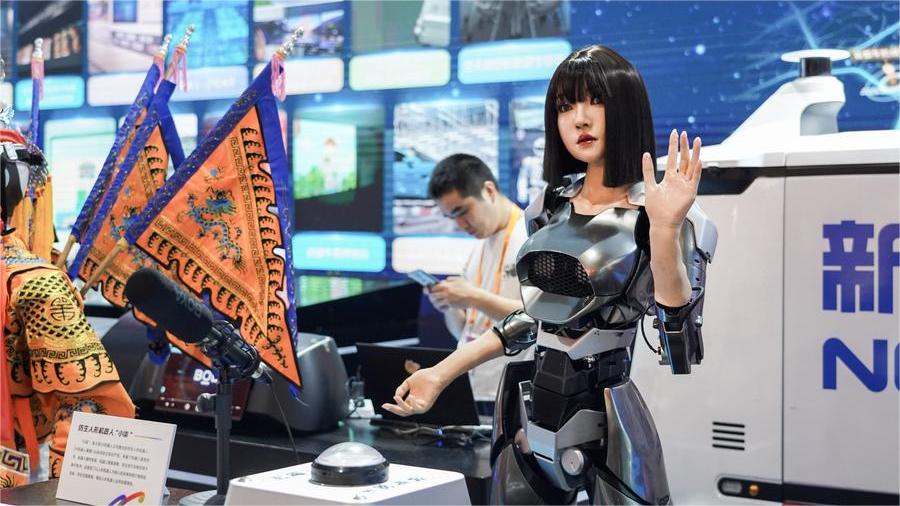How a made-in-China refrigerator reduces carbon footprint
A "smart" refrigerator made in China has recently been granted an online product carbon footprint certificate from the China Quality Certification Center, the first of its kind issued by the center.
The refrigerator, made by Qingdao Haier Refrigeration Appliance Co., Ltd., a subsidiary of Chinese home appliance giant Haier, can automatically adjust energy consumption based on the food volume it stores.

Photo shows a refrigerator production line of Chinese home appliance giant Haier. (File photo)
The certificate tracks the carbon emissions of the refrigerator across different stages, including raw material sourcing, production, distribution, usage, and disposal.
Refrigerants are an essential raw material for refrigerators. In the past, freon was commonly used as a refrigerant, but when released into the atmosphere, it causes ozone depletion.
"We are focusing on low-carbon alternatives for insulation materials in refrigeration equipment, and collaborating with suppliers to promote the use of environmentally friendly refrigerants and other new technologies to reduce fluorine emissions," said an executive with the company.
According to the executive, this frost-free refrigerator prioritizes the use of renewable, recyclable, and eco-friendly materials with minimal environmental impact. It exceeds Chinese national standards by being over 90 percent recyclable.
"Insulation foaming is one of the most critical processes in refrigerator manufacturing. We adopted innovative foaming technology to fill the space between the inner and outer walls of the refrigerator, significantly improving insulation performance and energy efficiency," said Hou Tingyi, an executive with the company.
Around Hou, many refrigerators are being manufactured on the production line. "Look, each of the refrigerators has five material injection guns working on its back simultaneously. We use a cutting-edge high-precision flexible injection technology that allows for multi-point injection, an upgrade from the previous single-point injection method. This technology can help reduce the use of foam material by 5 percent, increase the refrigerator's volume by 15 percent, and cut energy consumption by 3 percent," said Hou.

Photo shows an insulation foaming production line of Chinese home appliance giant Haier. (File photo)
In the distribution phase, the company has been able to reduce carbon emissions more efficiently across the entire process of warehousing, transportation and delivery by adopting new technologies such as smart warehousing, intelligent logistics, and eco-friendly packaging.
In the warehousing stage, unmanned operations have reportedly been implemented in multiple Chinese smart warehouses, which allow for automatic reception and dispatching of large items. The warehouses do not even need lighting, thus saving electricity.
In the transportation stage, an intelligent logistics system can automatically optimize delivery routes, while using new energy vehicles to reduce carbon emissions.
In the delivery stage, with a primary focus on biodegradable or recyclable green packaging materials, the company used reusable packaging while reducing the use of cardboard boxes to minimize the consumption of packaging materials.
Overall, by adopting reusable packaging materials, the company has reduced foam plastic usage by 32 percent and cardboard material usage by 83 percent.
More than 80 percent of a refrigerator's total carbon emissions come from its operational phase. How can carbon emissions be reduced during this phase? This challenge tests the product's design and technology.
It is learned that this smart refrigerator is equipped with multi-dimensional sensors that can detect changes in internal and external conditions. Based on data collected by the sensors, energy consumption can be reduced through an intelligent algorithm.

Photo shows service personnel collecting a used refrigerator in China. (File photo)
"We have accumulated refrigerator manufacturing data in the past 40 years and built a big database and energy-saving models. By using different parameter combinations based on the refrigerator's load, we dynamically match the most suitable cooling conditions, which saves about 15 percent more energy than single-mode refrigerators," said Chen Jianquan, an executive with the company.
A refrigerator's service life is typically 10 to 15 years. When the refrigerator reaches the end of its life cycle, users can submit recycling or trade-in requests through different channels, such as the official app or mini-programs. Within 48 hours of placing an order, service personnel will collect the old refrigerator.
"The dismantled raw materials will re-enter the industrial chain in a new form," said Li Xiuqing, general manager of the company's home appliance recycling division. For example, plastic goes through dozens of processes, including cleaning, sorting, granulation, and modification. The purity of the recycled new material can reach 99.9 percent, enabling high-value applications across sectors such as home appliances, automobiles, and everyday chemicals.
According to statistics, an old refrigerator with a volume of around 220 liters can yield about nine kilograms of plastic, 38.6 kilograms of iron, 0.6 kilograms of aluminum, and 1.4 kilograms of copper when dismantled. Recycling 10,000 refrigerators can reduce carbon emissions by 65 tons.
Photos
Related Stories
- Qinghai-Xizang Plateau a vital carbon sink: scientific research
- China moves to standardize carbon emission calculations
- Chinese scientists reveal carbon sink on Qinghai-Xizang Plateau
- Now world's largest, China marks the third anniversary of its carbon market
- China's carbon trading market sees stronger vitality: ministry
Copyright © 2024 People's Daily Online. All Rights Reserved.









